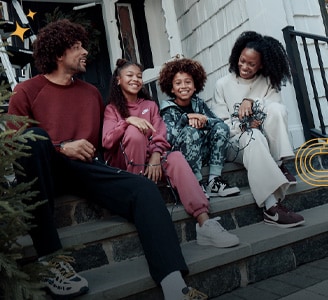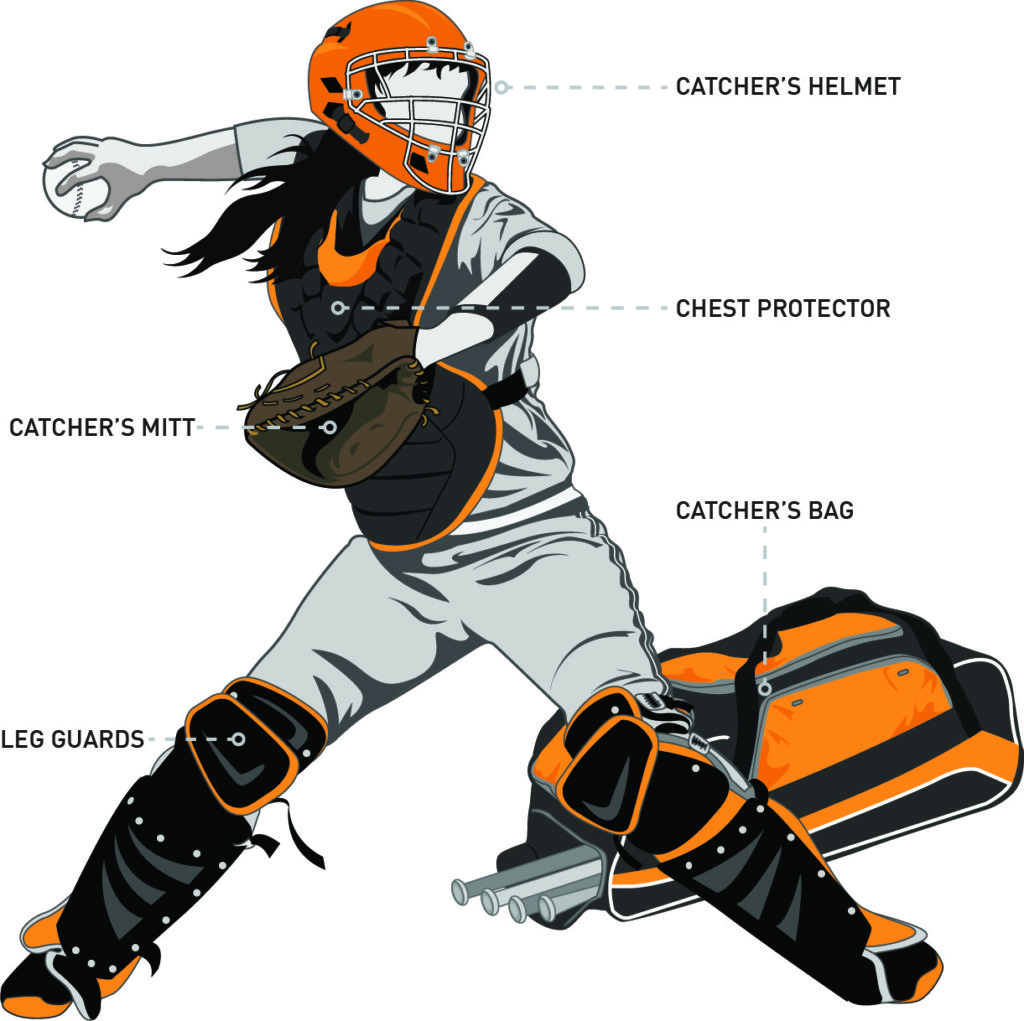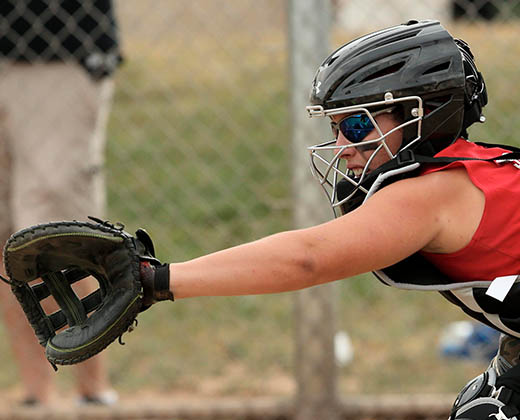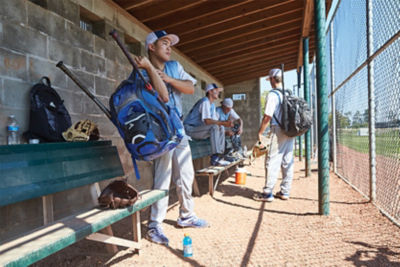Softball Buying Guide: Basics of Choosing Catchers Gear
Make sure you’re properly protected with the right catcher’s gear this softball season.
As a catcher, it’s crucial that you are equipped with the right gear in order to safely play and dominate behind the plate. Basic softball catcher’s gear includes four main components: a mask, chest protector, leg guards and a mitt. You can choose to buy these items separately or in a bulk set, but make sure that the gear meets the safety regulations set by the National Operating Committee on Standards for Athletic Equipment (NOCSAE).
So, before you or your child steps onto the field this spring, make sure you have everything you need for a successful season.
CATCHER’S MITT
When you’re catching heaters during the game, you’re going to want something solid and reliable. Thankfully, catcher’s mitts have been designed to not only protect your hand and wrist, but to make those game-changing plays as well.
Design
Catcher’s mitts differ from fielding gloves in many ways. For starters, most gloves have separate pockets for each finger stitched together with leather laces, while a catcher’s “glove” lacks those separations, making it a mitt instead.
They are made of thick and durable material — often leather — which helps protect the catcher’s hand from a pitch’s sting. They are also larger in order to handle the softball’s weight and density. When it comes to webbing, you can choose from either an open or closed webbing style.
Sizing
Catcher’s mitts are measured by their circumference, not by length like other gloves are. Players ages 12 and under will typically look for a 32" or 33" mitt, while players who are 13 and older typically need catcher’s mitts around 35". This is so you can get a full enough pocket for the bigger ball.
CATCHER’S HELMET
A vital element of protection is a catcher’s helmet, which breaks down into two key designs.
Mask
A catcher’s mask is the original style of catcher’s headgear. The mask cages the face area, and is padded around the forehead and jaw for added protection and comfort. It has elastic straps that wrap around the back of the head to keep it in place, but make it easy to pull off to see and catch a foul ball. The downside is that masks offer little protection to the back of a player’s head, which is why they’re usually only worn by adults. An attachable throat guard can also be added for increased protection.
Helmet
Similar in appearance to a hockey goalie mask, the helmet style offers full cranial protection. While it covers the entire head, it also cuts below the jaw to guard the neck and throat as well. Because it covers the whole skull, peripheral vision is a bit limited, and the helmet may be more difficult to remove quickly during a play. The helmet style is available for both adults and youth.
Sizing
Youth and adult helmets and masks are designed to be one-size-fits-all, since there are straps in the back which you can loosen or tighten to get a better fit. Helmets and masks labeled youth are designed to fit players 12 and younger while ones labeled adult are meant for players 13 and older.
CHEST PROTECTORS
Not only do chest protectors guard the obvious, they also shield the entire torso area and sometimes the upper arms, too. They are lined with foam that molds to the catcher’s body to absorb shock from softballs, bats and even other players during collisions at the plate. Elastic straps go around your shoulders and waist to clip in the back and keep the shield in place.
Sizing
When buying chest protectors, measure from the base of your neck to your waist. Whatever that number is should be the size you want to buy. So, if you measure 14" or 13.5", you’ll want to look for a size 14 chest protector.
LEG GUARDS
Protecting the ankles, shins and knees, leg guards also provide comfort for a catcher who kneels for long periods of time. They extend from the top of the cleat all the way up above the knee. Leg guards are constructed of soft padding for comfort on the inside and a hard external shell on the outside to protect the catcher from balls and other players. This protective gear hinges at the ankle and knee for mobility. Elastic straps wrap behind your legs and fasten to the other side of the guard to keep it sturdy on your body. Leg guards can also be paired with pads on the calf muscles to provide a cushion for catcher’s when they squat down. This is a separate, optional item to consider.
Sizing
Like chest protectors, leg guards are pretty easy to shop for in terms of sizing. To find the right size, measure from the middle of your knee to your ankle. That measurement should be the correct size leg guard.
ACCESSORIES
Now that you’ve selected the big gear, complete your suit of armor with some of these helpful accessories.
Knee Savers
When you spend your time crouching for seven-plus innings, your knees can become sore. To combat this, think about knee savers. These are wedge-shaped pieces of soft foam that attach to the back of your leg guards to help take some of the pressure off your knees when in the catching stance.
Throat Protectors
For added protection, look into a throat protector. These are strong pieces of plastic that help protect the catcher from foul balls and close plays at the plate. Most throat protectors are one-size-fits-all.
Bags
It’s also important to have a catcher’s bag to easily transport all of your equipment from home to the field, and vice versa. These are much larger than a standard softball bag in order to store all of your gear.
Remember that helmets, chest protectors and leg guards can also be purchased in a set. This can be especially beneficial for beginners or coaches looking to provide the essentials to their team.
Now that you have the right gear, it’s time to suit up and take the field. Play ball!









